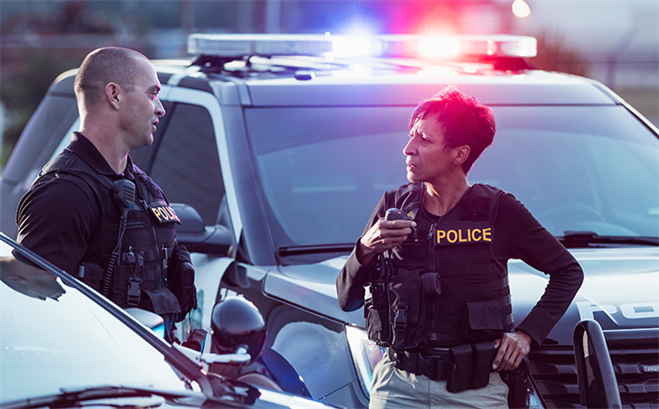Incident-Based Crime Reporting Explained
August 26, 2021 by Lily Rexing

Public safety agencies at the local, state, and federal level face mandates to change reporting standards from Uniform Crime Reporting (UCR) to Incident-Based Reporting (IBR). While any reporting shift can be stressful, it can be even more so in a mission-critical environment.
The Tyler Tech Podcast recently featured a conversation with three public safety industry experts on this shift, including its impact on different levels of government and how technology can ease the transition. In the episode, host Jeff Harrell spoke to Skip Bland, whose 15 years in the Air Force Office of Special Investigations led to his current position as a subject matter expert at Tyler Technologies; Adam Bobola, a 13-year law enforcement veteran and 10-year Tyler staff member with the Public Safety Division; and Clark Nethers, a senior implementation consultant for Incode Public Safety with 22 years of law enforcement experience.
Read some of their top insights below, and check out the podcast episode for the full conversation.
Benefits of NIBRS
Since the early 1970s, law enforcement agencies have summarized reporting under the Uniform Crime Reporting Standard (UCR Standard). Now, the FBI is migrating these agencies to a new standard called National Incident-Based Reporting (NIBRS). According to Bland, federal agencies, in particular, welcome the shift, as it encourages jurisdictions to submit more detailed intelligence. Leaders can view incident information by city, county, state, or federal level and even make comparisons between agencies of different sizes. “NIBRS gives local law enforcement the ability to see statistically what is going on and combat crime in their locale,” Nethers adds. “From a broader standpoint, a small agency may want to look at a neighboring agency to see how crime over there compares to them … It allows administrators to guide their departments, have better enforcement, and focused enforcement towards certain types of crime that they're trying to combat.” The reporting change also enables the public to examine statistics on the FBI’s website or local portals. As Bobola noted, it’s a good thing for citizens to be able to research and compare any locations with apples-to-apples crime statistics.
Transition Challenges
“One of the biggest things that we see during this transition process,” noted Bobola, “is because they're going from a summary-based reporting system to an incident-based reporting system, there's this spike that we'd call a crime spike.” All of a sudden, jurisdictions are reporting everything, whereas with UCR, they only captured certain crimes. What looks like a significant crime spike can be alarming to elected officials and leaders. Getting ahead of this alarm involves educating government agencies about the impending spike in case numbers based on reporting standards, not area incident rates. Agencies and officers themselves are also facing hurdles because of this mandated change. Additional data entry or retraining can be daunting in departments with already scarce resources. Nethers noted intuitive software minimizing the impact of change is key. Such software, for example, “can do all the heavy lifting for them so the administrators within their department can then push that data on to the state and onto the FBI.”
Safer Communities
Accessing and analyzing the data from this new reporting method ultimately helps leaders compare agencies, locations, offenses, and more. Analytics used in every type of business come into play here as well, informing smarter decisions resulting in safer communities. To prepare for the reporting switch and realize results for those they protect, Bland noted agencies should focus on technology that is, “NIBRS compliant, configurable, and truly meets the needs of the modern-day law enforcement officer.” Software solutions can, indeed, ease the transition to a new reporting system while also making the day-to-day lives of officers easier. “The ultimate goal of software,” added Bobola, “is to limit the time spent in the office or at the department filling out reports so that the officers can be in the field, protecting the citizens, and providing a safer community.”